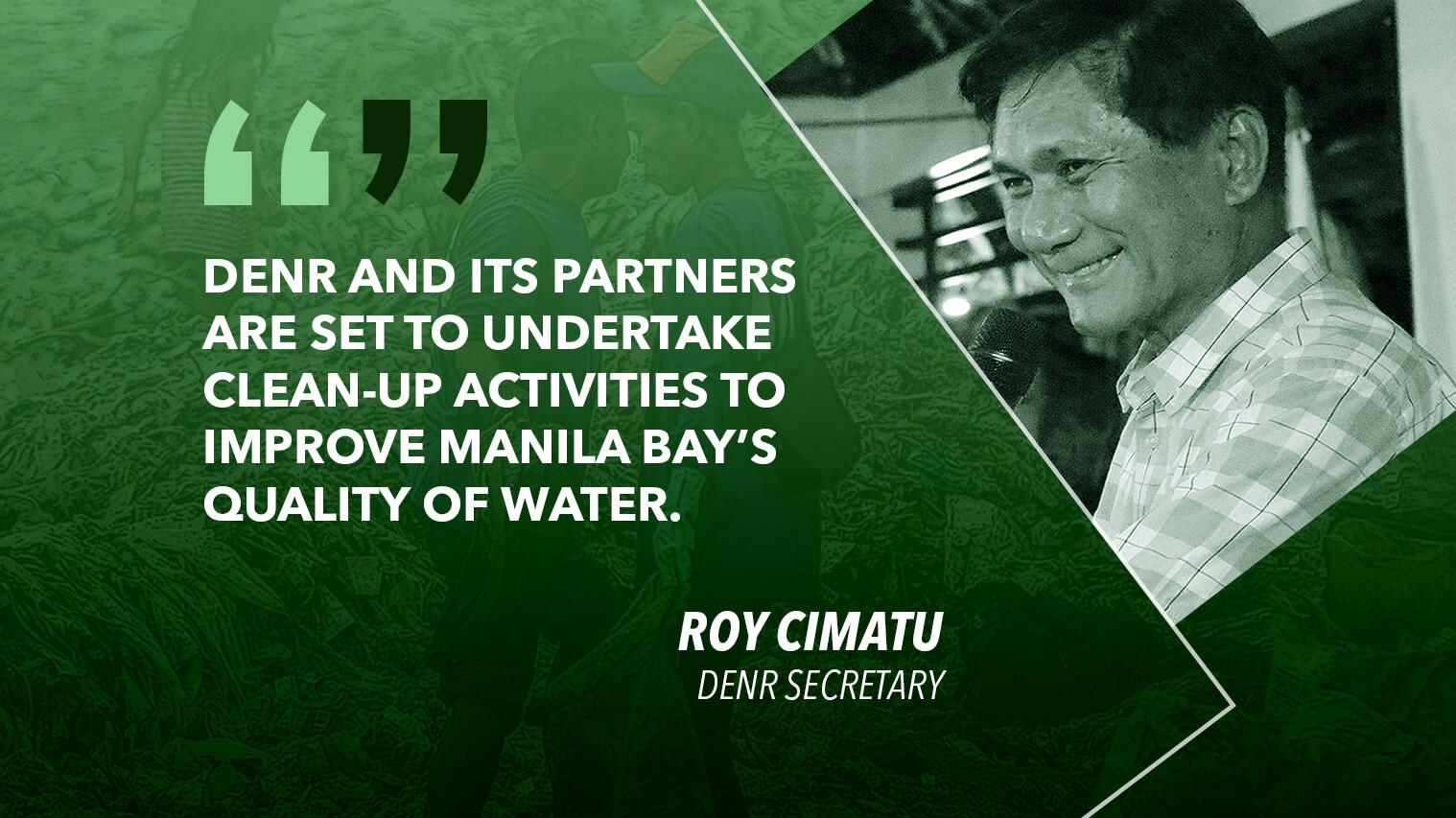The Department of Environment and Natural Resources (DENR) will spearhead on Sunday simultaneous water clean up activities in the National Capital Region, Central Luzon (Region 3) and Calabarzon (Cavite, Laguna, Batangas, Rizal, Quezon) to kick off the rehabilitation of Manila Bay.
“The rehabilitation’s Phase I includes cleanup of esteros and coasts of Manila Bay,” DENR Secretary Roy Cimatu said at a press conference in Quezon City.
Esteros are among priority areas for the cleanup since these waterways are major sources of pollutants in Manila Bay, the environment chief said.
The environment head added that Phase II of the rehabilitation will be on educating the public about solid waste management.
Phase III will focus on sustaining efforts to save Manila Bay from further environmental degradation, he added.
Cimatu said in NCR, Phase I of the rehabilitation will prioritize cleaning up of Manila Bay’s coastal stretch along Roxas Blvd. from the Manila Yacht Club to the U.S. Embassy.
“In NCR, Phase I of the rehabilitation will prioritize cleaning up of Manila Bay’s coastal stretch from Manila Yacht Club to the US Embassy.”
“Many people stroll there so we’ll clean up that area first,” he said.
Among the targets for the cleanup in Regions 3 and Calabarzon are sites with piggeries and informal settlers, respectively.
DENR and its partners are set to undertake clean-up activities to improve Manila Bay’s quality of water as its water pollution is far worse than Boracay Island, which the DENR helped rehabilitate last year, Cimatu noted.
He said decades-long flow of solid waste and untreated discharge into Manila Bay raised level of pollutive coliform bacteria in its water to over 330 million most probable number (MPN) per 100 milliliters.
“The level of pollutive coliform bacteria in Manila Bay is over 330 million MPN per 100 ml. coliform level in Boracay was less than one million MPN per 100 ml. The difference shows how big the problem is in Manila Bay.”
“Coliform level in Boracay was less than 1 million MPN per 100 milliliters,” Cimatu stressed. “The difference shows how big the problem is in Manila Bay.”
The safe coliform level is 100 MPN per 100 milliliters only. “We’ll try to bring down coliform level in Manila Bay to that level,” he said.
Meeting such target means Manila Bay’s waters will be fit again for swimming and other contact forms of recreation, he added.
Cimatu said the 13 agencies cited in Supreme Court’s 2008 order to clean up, rehabilitate and preserve Manila Bay will join forces to achieve the target and help prevent its continuing environmental degradation.
Involved in the bay’s rehabilitation are the environment, agriculture, public works, interior, education, health and budget departments, the Metropolitan Waterworks and Sewerage System, Local Water Utilities Administration, Metropolitan Manila Development Authority, Philippine Coast Guard, Philippine National Police-Maritime Group and the Philippine Ports Authority.
Cimatu said the network for rehabilitating Manila Bay is expanding and no longer limited to such agencies.
“Other agencies volunteered to join us in the work,” Cimatu said.
He added that several companies also already pledged support for Manila Bay’s rehabilitation.
“Some companies will be lending equipment for the work,” Cimatu said recently at the 10th International Water Association Conference on Efficient Urban Water Management in Pasay City.
He noted Maynilad Water Services Inc. (MWSI) and other companies offered to share respective expertise relevant to the rehabilitation work.
“MWSI will provide guidance on pipe-laying,” Cimatu specified.
Experts said coliform bacteria are found in the environment as well as in human and animal feces.
Presence of coliform bacteria indicates contamination of water and such has potential to cause diseases.


